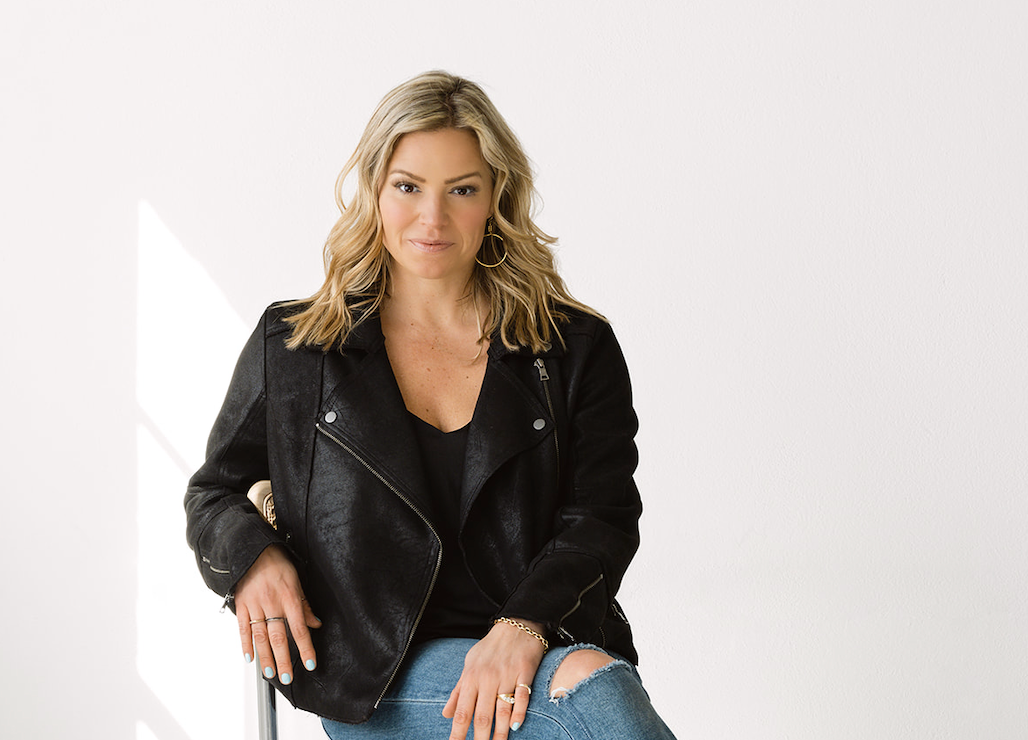The 50 States Project is a series of candid conversations with interior designers across the country about how they’ve built their businesses. This week, Seattle-based designer Allison Lind tells us about her unique client discovery process, why she’ll never go back to photo shoots without a stylist, and why she prizes good vibes and a fresh challenge above a project’s earning potential.
What was your path to launching your own firm?
I really got thrown into the deep end pretty quickly—or, I should say, I threw myself in. I was working in editorial for home design magazines, first in Seattle and then in New York. One fateful day, I was in my editor’s office when a stylist called [to cancel on] a big photo shoot we had scheduled in Miami for the coming week. I just raised my hand and said, “I’ll do it.” And my editor was like, “Well, here’s your shot, kid.” I flew down to Miami and curated this entire outdoor set—furnishing an outdoor patio, selecting fabrics for outdoor pillows—and then styled it for the shoot. That launched me within the magazine itself. Suddenly I was getting all of the styling gigs: I got to design Kelly Ripa’s dressing room for Live with Regis and Kelly; they flew me out to L.A. to do Mark Steines’s office and dressing room for Entertainment Tonight. I kept getting these furnishings projects for the magazine, and I loved it.
In 2008, a lot of magazines folded when the market crashed, and I lost my job. I started doing some freelance [design] work—with a lot of friends and friends of friends—but I never took it seriously. I’m a journalist is what was in my brain. When a friend of mine who is a real estate agent sold a three-bedroom condo on the Upper East Side, she [recommended me]. She said, “They’re looking for an affordable interior designer.” And I said, “Well, I’m not a designer.” She said, “But you can do this, and here’s what they’re willing to pay you.” And I said, “I’ll do it.” I was in my 20s and paying New York rent, so you’ve got to do what you’ve got to do. And I took the job and just fell in love.
How did that first project go?
I remember not sleeping. When I wasn’t working on the project, I was studying—just trying to learn everything I could about what I was doing and how to do it right. When I finished that project, that same friend said, “We’re going to hire a photographer and photograph this for you. I can show these photos to other clients and get you another job.”
Did you want the next design job at that point?
I did. I loved it, and I thought I was going to go back to school and get my design degree. But then the next job came, and I thought, “OK, when this one’s done and I have time, I’m going to go get my degree.” But the jobs just kept coming. I’ve been so incredibly lucky.
On July 9, strategist Ericka Saurit, in part two of her Social Storytelling series, dives deeper into the visual side of self-promotion, dissecting how your Instagram feed, stories and content work together to deliver a cohesive, scroll-stopping message about your unique design brand. Click here to learn more and remember, workshops are free for BOH Insiders
We want to hear your thoughts! Take BOH’s annual reader survey, an 8-minute questionnaire that helps us get to know you better and will allow us to tailor our storytelling to your business needs.
By the third job, I was texting with a friend of mine [before getting] on a flight back to New York to meet with a client the next day, and she said, “So you have your LLC, right?” And I was like, “My what?” That’s when I realized: This is a real business, and now it’s time for me to start taking it seriously. I spent the four-hour flight figuring out how to set up a business. I’m more than 10 years in, and I still keep joking, “When things slow down, I’ll go back to design school and get my degree.”
Is there any part of you that really does want that degree still?
I have a profound respect for people who knew early enough in their lives that this is what they wanted to do, and they were able to go to school. There were so many mistakes that I made along the way that I could have avoided had I gone to school and gotten my degree. It just wasn’t the path that was handed to me. But no, at this point, I’ve learned enough. I’ve taught myself so much along the way, and I’ve become smart enough to hire the people who have the experience that I didn’t get. I have an amazing team that works with me—and not all of them have gone to design school. I think we’re about half and half, because I’ve seen in a couple of them that same excitement and drive that I had, and I respect that just as much as I respect the design degree.
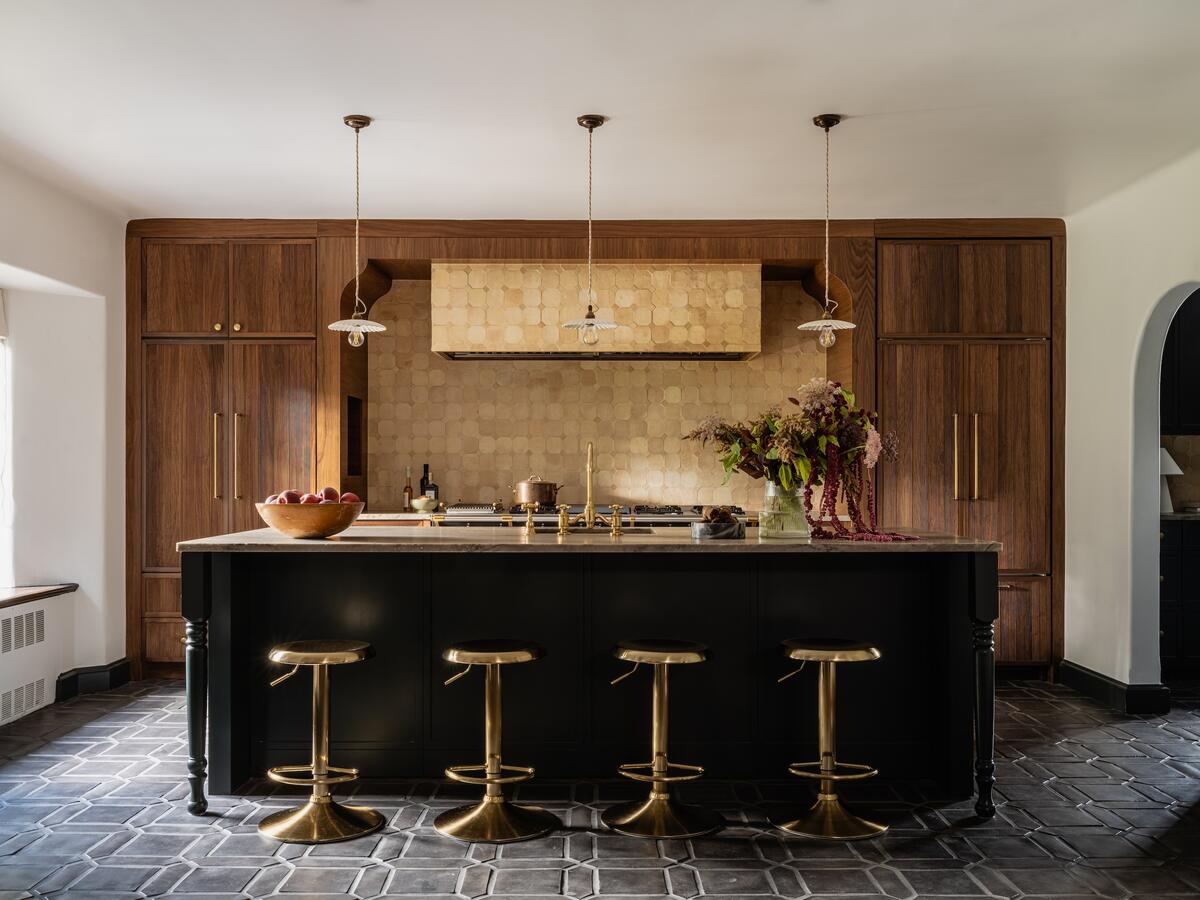
What took you to the West Coast?
I was born and raised in a little town called Gig Harbor, which is just outside of Tacoma, which is just outside of Seattle. Journalism and a love for adventure took me to New York, and I was there for 10 years. That’s where I created my firm, and I was feeling pretty established there. But then I met the man who would eventually become my husband, and he was ready to leave to start a family. Seattle called us back, because this is where my parents are, and we moved back here in 2016.
Did it feel like starting over at that point?
Yes, and it was frightening. It was hard because in Manhattan, it’s all apartments and condos. When you move out here, for the most part, it’s very large homes. So not only was it figuring out how to reach new clients—but when I would reach them, they wouldn’t totally trust me. It was like, “How are you going to handle a 5,000-square-foot home?”
How did you answer that?
I’d have to say, “Well, let’s see. Right now, I have 15 projects in New York, and each of them are 1,200 square feet. So if we do the math, I think I can handle one 5,000-square-foot home if I’m already managing 15 1,200-square-foot homes.” But it took a while.
When did you start to feel established?
I’ll let you know! I’m kidding. I feel so good right now. I have an amazing team, and we’ve got this gorgeous office space in downtown Seattle and the most incredible clients. I’m trying to focus on that positive and enjoy this time, but I don’t ever want to say, like, “I’ve made it.” I think there’s always room for me to learn more. The industry is always changing, so I’ll need to change too. I need to learn with it. If you think you’ve made it, then I feel like you’d get complacent.
How has rebuilding your business in Seattle shaped the opportunities that come your way?
For me, it started with smaller Craftsman homes. I was doing a lot of those. And inevitably you do one project, you photograph it, people see it, and if they like it, they’re inspired by that. Then you end up getting a lot of the same look—and that works really well for some designers who have a particular niche. I wish I was that way. I have such a vast love for design that I get really bored if I’m doing one niche. So it took a while for me to feel like I was in a groove where I had a vast enough portfolio to reach a wider audience.
What I love so much about the West Coast, and Seattle in particular, is that there is such diversity here thanks to all the industries that have made this city their home base. We have clients from all over the world, and because of that, we have people who are more open to different aesthetics and things that are outside of what traditionally would have been called “the Pacific Northwest look.”
You didn’t want to be part of that aesthetic.
If you look back 15 to 20 years, there has been a look for Seattle design. It was very transitional—and very gray-beige, which is shocking to me because it’s already gray enough here—but it was a look, it was beautiful, and the designers at that time were so talented. So I’m definitely not knocking it, but it was not for me personally. I have clients who emigrated from India; they bought this old Tudor home and wanted nothing but rich colors and textures. At the same time, I have clients who were born and raised in Tacoma, and they wanted a super monochromatic, glam minimalism when they bought a home there. The two projects could not be more opposite, but they’re equally fun and challenging.
I think New York had more people willing to take risks because people wanted to make a statement—to be bold and stand out. That didn’t come as quickly in Seattle, but I’m seeing more room for creativity now, which I really love.
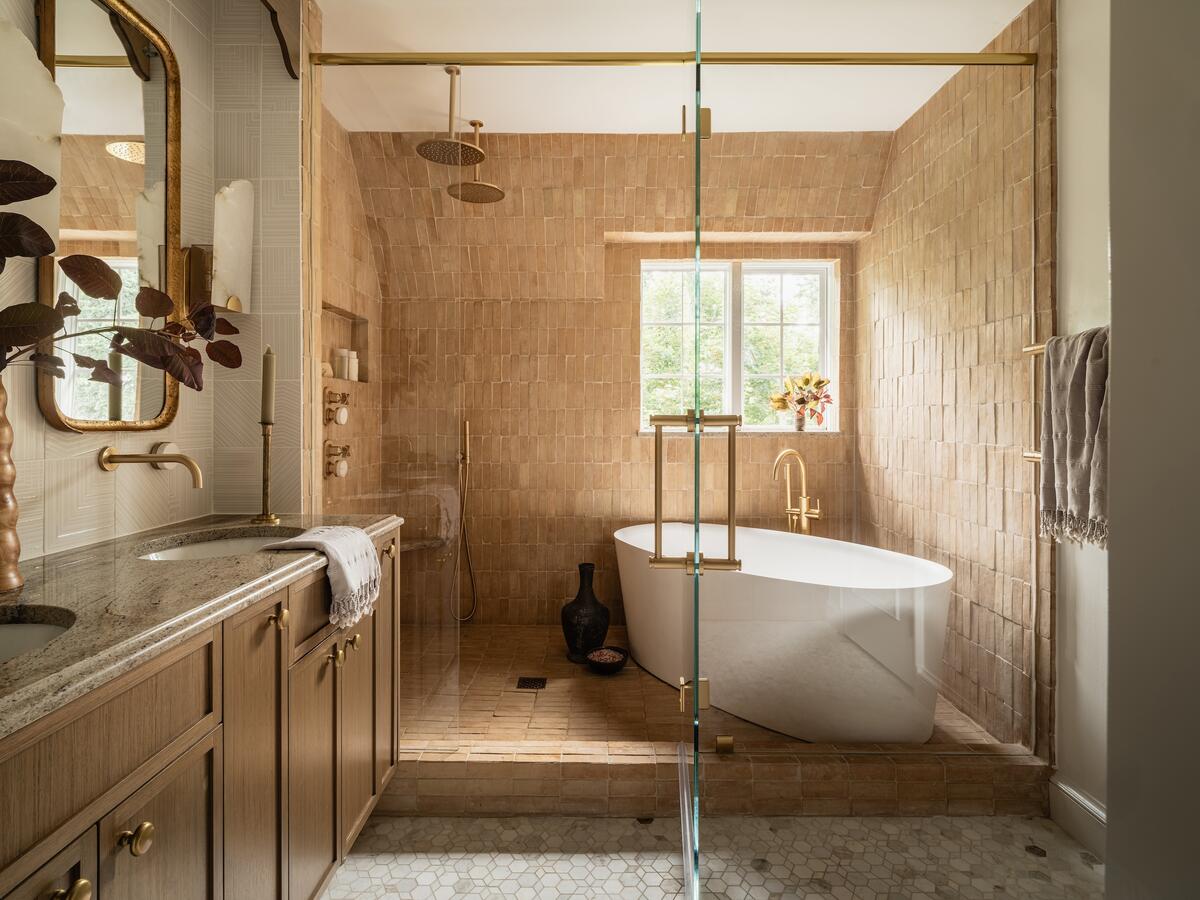
How has your aesthetic evolved as the work coming in has changed?
I think the biggest evolution I’ve experienced is having more confidence with my clients, or at least pretending that I do. It’s been about learning to trust my instincts. I had such a hard time with that in the beginning, because I just wanted to make people happy. I think that’s a goal for a lot of designers—that’s why we do this, because we love creating beautiful spaces for people. But the problem with being so focused on making them happy is that I was just a yes man. A client would come to me and say, “Oh, I really love this; I think we should do this,” and I’d say, “Oh, OK, I’ll make that work”—even when the right answer was, “This isn’t the right choice.”
I’ve learned to have more confidence, and to speak up and really be the advocate my clients actually need rather than the yes man that they may think they want. I know now that it’s going to be a better end result when you have the confidence to say, “You just need to trust me.” As that has shifted for me personally, it’s made a huge difference in my clientele, and in my projects in general—we’ve been able to push beyond safe choices and convince them to try different materials, colors and textures. That’s not only more fun for me and my team, but I think it’s worked out much better for the clients.
How do you approach sourcing and shopping?
During our initial consult, the clients use their words to describe their style. But as we all know, that can mean a million different things. So I’ll take their words and I’ll go dig up 70 to 100 images, and then I spend about an hour clicking through those images with the clients.
Is it just, “Do you like this? Do you like this? Do you like this?”
The first thing I say is, “None of these images are mine, so you don’t have to worry about hurting my feelings.” And then I just say, “I’m going to click, and I want you to think out loud.” You’d be surprised at what comes out of that. Sometimes it’s, “I really like how this feels, but I don’t know why.” Other times, it’s, “Oh, I think I hate animal print.”
The result is so much more nuanced than saying, “I like midcentury modern and I love color.” [That exercise] also helps me create a map of what vendors I want to use. Are the clients into more of an old-world look and do I need to go vintage shopping, or is it glam?
This is a tangent, but I don’t like to source the same thing twice if I can avoid it. When someone sees an image on Instagram and they’re like, “I’m redoing my kitchen and I love that tile. Can you share that with me?”—it honestly drives me crazy, because I’m like, “But it’s your kitchen. Shouldn’t you find something that is special to you?” Yes, be inspired by everything that you see. That’s what’s so beautiful about social media and being able to share work. But you are also a unique individual, and your space should reflect you, not someone else’s kitchen that you saw online. I’d make a lot more money if I sourced the same thing on repeat, but I’d be so bored.
What trade resources do you turn to again and again?
I love design centers because you have experts in each showroom who are on top of it. There’s just not enough time in the world for me to know everything that’s being released, so I appreciate having vendors we trust, where we can say, “Hey, I’m looking for some sort of monochromatic floral textured wallpaper with a bold pattern. What do you got?”
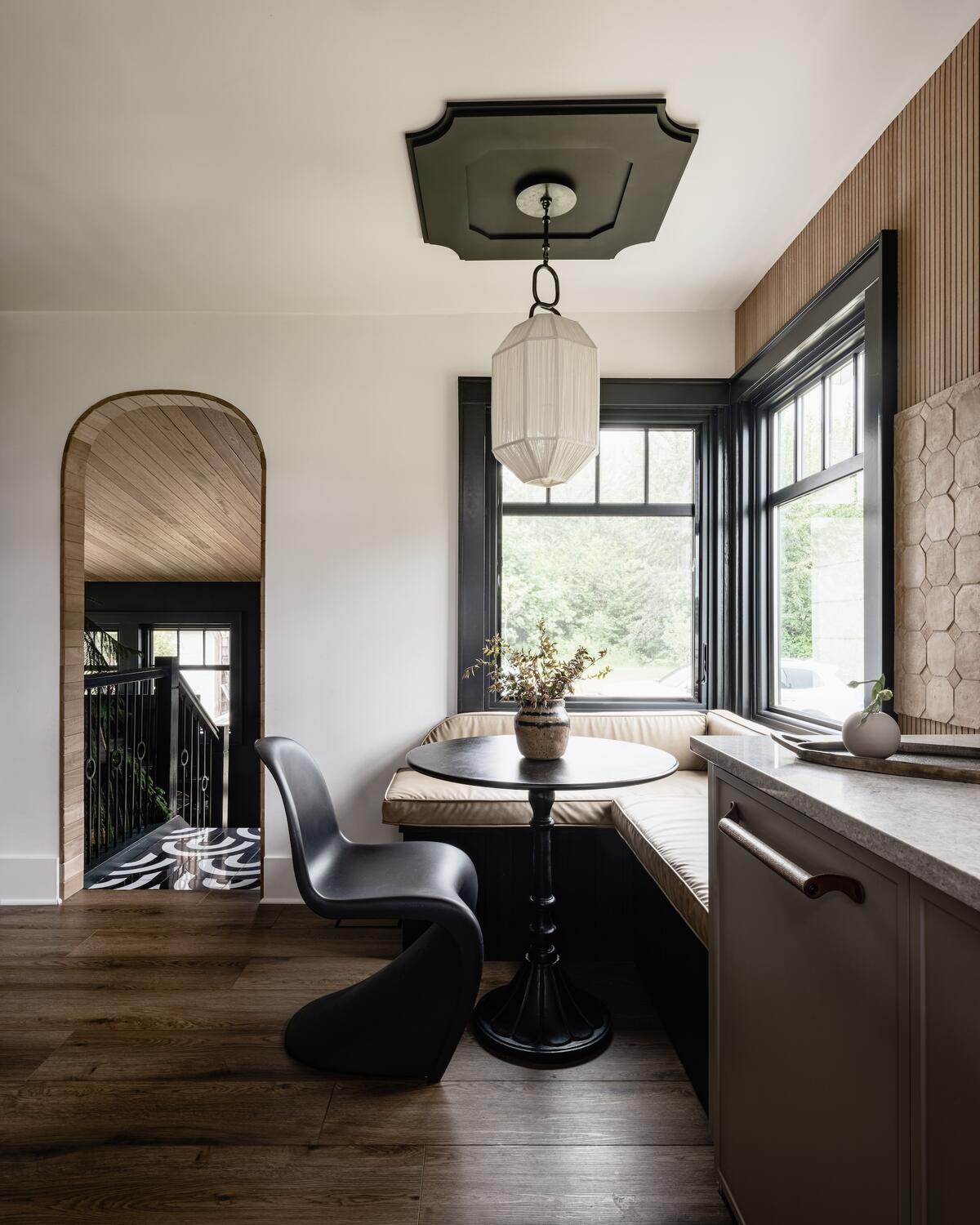
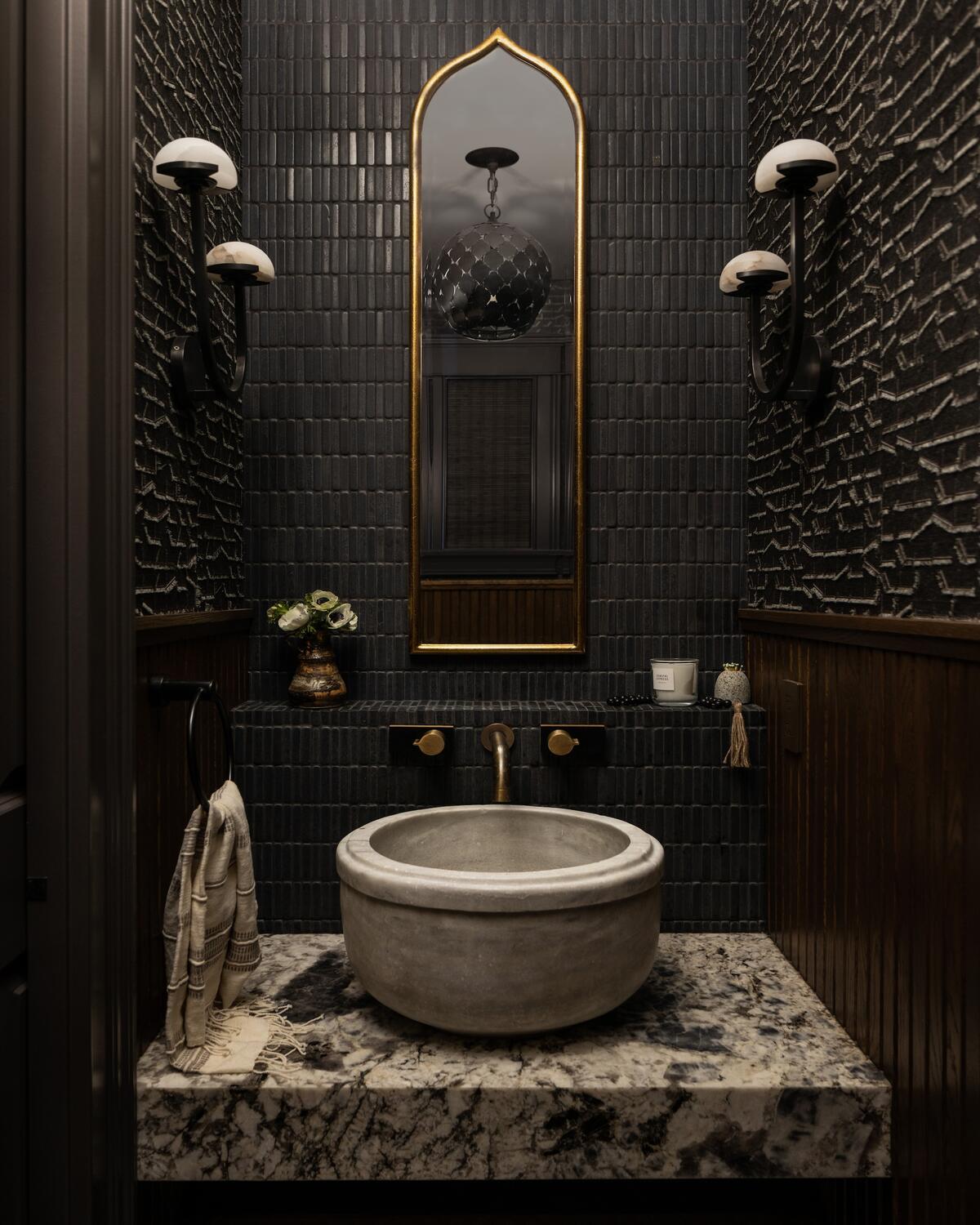
When did you start hiring, and what does your team look like today?
I had a conversation with someone recently about the right way to go about building a team, and I guess there are two camps: One is that you build the team and the clients will come. I did the opposite, and have filled the roles when desperation hit.
I was on my own for about a year, and started feeling so overwhelmed with all of the things that I needed to do, so I brought on an intern to help me with measurements and drafting—a design assistant, essentially. She is still working with me to this day. And then between the two of us, it started getting really busy again. I thought, “OK, clearly it’s time to bring on somebody else,” and that person is also still working with me to this day.
That’s so amazing—and so rare!
I’m so humbled by those two human beings. They’re incredibly talented women, and they work with me on a contract basis so that they could have the freedom to build their own careers and do their own thing. And I’m so proud of them. Every chance I get, I make sure they know how valuable they are to me, because I wouldn’t be here without them. They’re both on the East Coast, and they help me manage all of the projects on the ground that we do there, but then they hold roles on all of our projects from a virtual standpoint. And then here in Seattle, there are three more women who work with me in a designer role, from senior to junior.
So you were working virtually well before the pandemic?
Oh, gosh, yes. I’m the OG of working from home. I finally got an office space, and it’s so weird— I’m like, “Where are my slippers?”
How many projects are you typically working on at one time—and where does a client see you versus your team members?
At any given time, we’ve got about 30 active projects of varying sizes. Some of them are led by our senior designers and then I am in the background on those projects. I think it’s important to allow my designers to formulate that relationship with their clients, where they are seen as the trusted authority. When I first started putting other designers in the lead role, I still had more of an in-person presence, and [it didn’t work]: The clients were second-guessing everything my designers would do, and would come to me saying, “Is this right? Is this what we should do?” So now I intentionally step back, because there needs to be one authority.
How does that work from an onboarding perspective? How are you setting those clients up to know that they’re buying into your firm, but this lead designer?
That’s honestly one of the hardest things, and I still struggle with it. I regret naming the firm Allison Lind Interiors for that one reason. It was Allison Lind Interiors because it was just me— that’s all the company was for a year. But now, we are a we, and when we are named Allison Lind Interiors, most people who hire Allison Lind Interiors want to work with Allison Lind.
When we do onboarding, I make it very clear upfront to the client. I’ll say, “For your scope and for your particular project, I think our designer Allie would be spectacular. I work behind the scenes, and I will be advising her, but she is your main point of contact.” I make it clear that I’m still here—I’m still approving everything that goes out the door and helping the designer if they need it—and I think that gives them a little more confidence. And then along the way, I like to chime in: When the designer sends something off, I like to be a little cheerleader via email and say, “This looks so great,” or “Oh, this is so exciting, you guys. Can’t wait to see what Allie’s coming up with.” I want to remind them that I’m here, but I’m not their authority.

How do you decide where you’re taking a more active role in the project and where you’re handing off those jobs?
It’s a lot about my schedule when the inquiry comes in. There are times when it’s awful timing—where I’m like, “Dang, I want to do this project so bad, but I’m already pulled in a million directions, and I would be doing a disservice to my other clients if I took that job.”
I’m learning to say no, because I haven’t really been good at that in the past, but I have a husband and kids who need me, too, so I have to sleep at some point. So yeah, it’s a lot of timing. If there’s a project that is extra exciting and I can find a way to fit it in, I will, because I started doing this purely because I love it. I never had even an inkling that I would make a living doing this. It was just for pure joy, and that has stayed with me ever since. Like, yeah, I have bills to pay, I have a mortgage, I have a team to support right now, but the number one—and I say this to my team too—is to enjoy what we’re doing. If we’re not, we need to move on and do something else.
How does that influence the projects you say yes to in general?
Part of my screening process is completely tied to that. Is this a project that excites me, or is it someone who wants me to copy-paste something off of Pinterest that’s been done a thousand times? Is it clients I would want to hang out with? I mean, we’re spending so much time with these people. If they’re miserable people, I don’t want to spend time with them. I have turned down large, really great projects because I just didn’t vibe with the people. And I think that it would be a disservice to them, too, if I took the project just to make money. They’re not going to get the best result if they don’t get along with their designer, or if it’s not an enjoyable experience.
How do clients find you these days?
I’ve been getting a lot through Instagram, which is my constant reminder that I need to care more about Instagram. Beyond that, it’s a lot of word-of-mouth. I have had quite a lot of repeat clients, which has been so wonderful, just to work with people over the years and their life changes. And, yeah, real estate agents. A lot of referrals from real estate agents. It’s one of those things that I’m still learning, like, oh, right, I need to do some marketing and advertising. But connecting with people wherever I can, and having that word-of-mouth has been my biggest source of new clients.
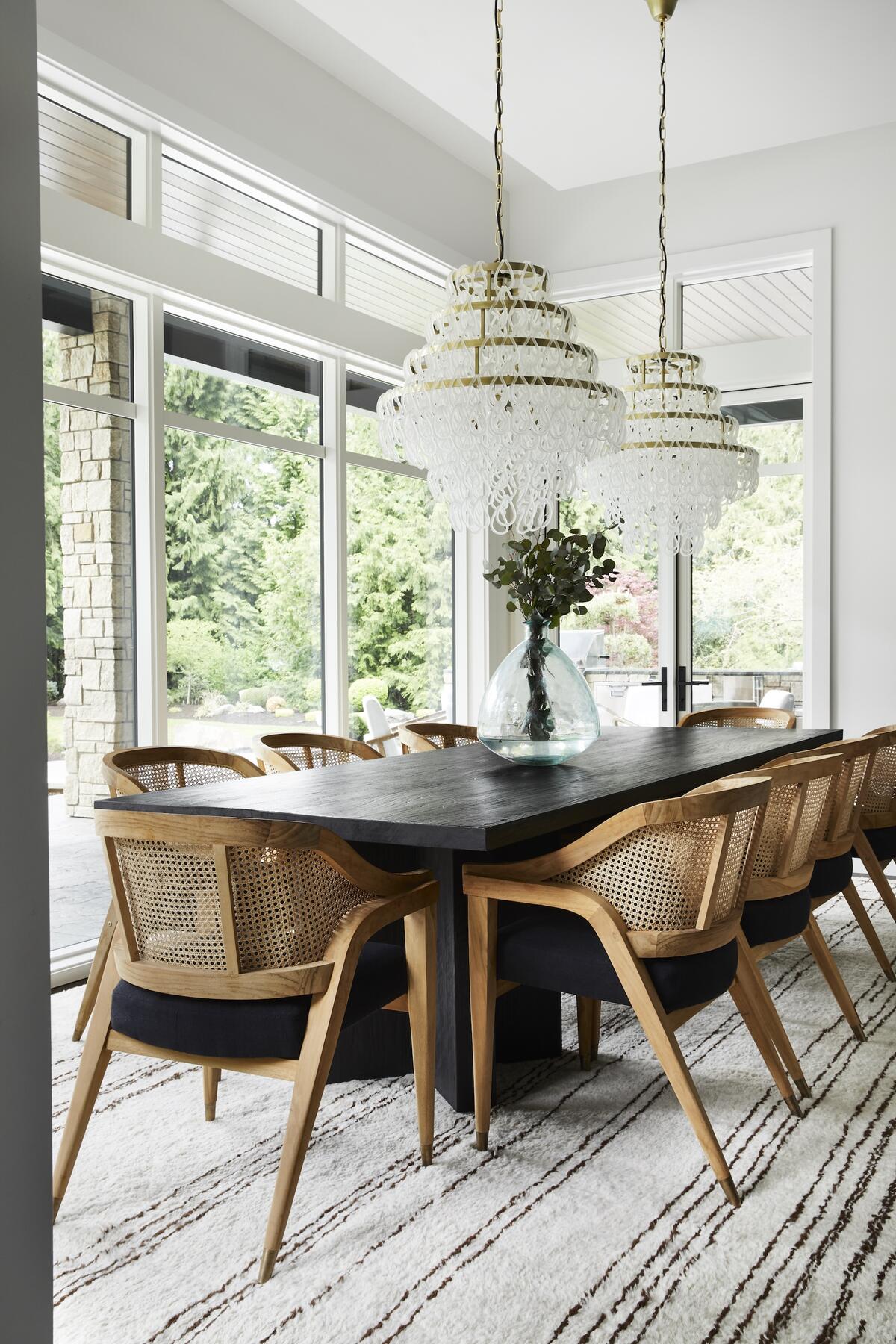
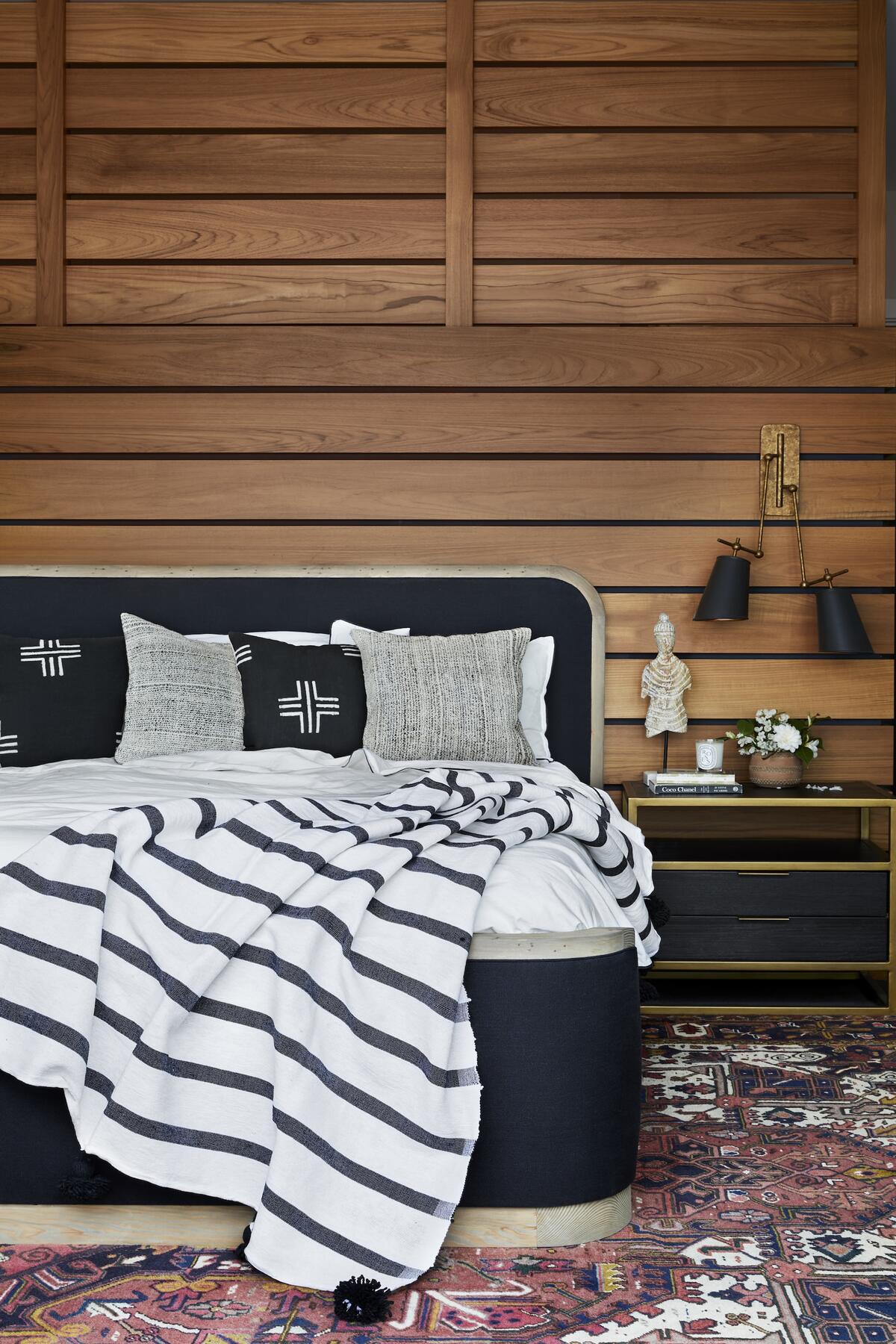
How do you approach billing?
I hate it. We do sort of a hybrid because when I started, I’m like, OK, hourly, because that’s all I knew how to do. And then, I heard the theories about how you’re selling yourself short by charging hourly, so you need to do a flat fee. But then there were projects where that didn’t make sense. And so my theory now is every project is different.
How does that play out in your billing strategy?
Every client is different. And thus, everybody has different needs. So at the start of the onboarding, I have that conversation of: How do these people make decisions? Do they need to see tons of options and variations? Do they like to go shopping in person and touch and feel everything? Or are they quick to make choices and want everything presented at once? There are so many different ways to go about it, which will change how it’s billed.
Mostly, we do a flat fee with hourly add-ons if there are specialty things that need to be brought into the scope of work. But we have small-scale, flat-fee projects we call our “micro-makeovers,” or “micro-renovations.” If someone just wants their kitchen renovated, that’s easy for us to scope out. But it’s a work in progress. I don’t think there’s a perfect system. I think every designer has to figure out what works best for them. Do they mind tracking hours? Do they like having a nailed-down scope of work and no scope creep? Everybody’s different, so I’m still trying to figure it out, honestly.
Are clients a deciding factor in that? Do they come in with strong opinions or preferences?
Some do, and those are the ones that I will let kind of guide [our approach]. If someone says, “Nope, I need a flat fee. I need to know my full budget, start to finish,” then we do a flat fee. And then others will say, “I like hourly, because I want more of a consulting-level role,” and I’m fine with that. But if they don’t know, I’m a pretty good judge of just talking with them and getting to understand them.
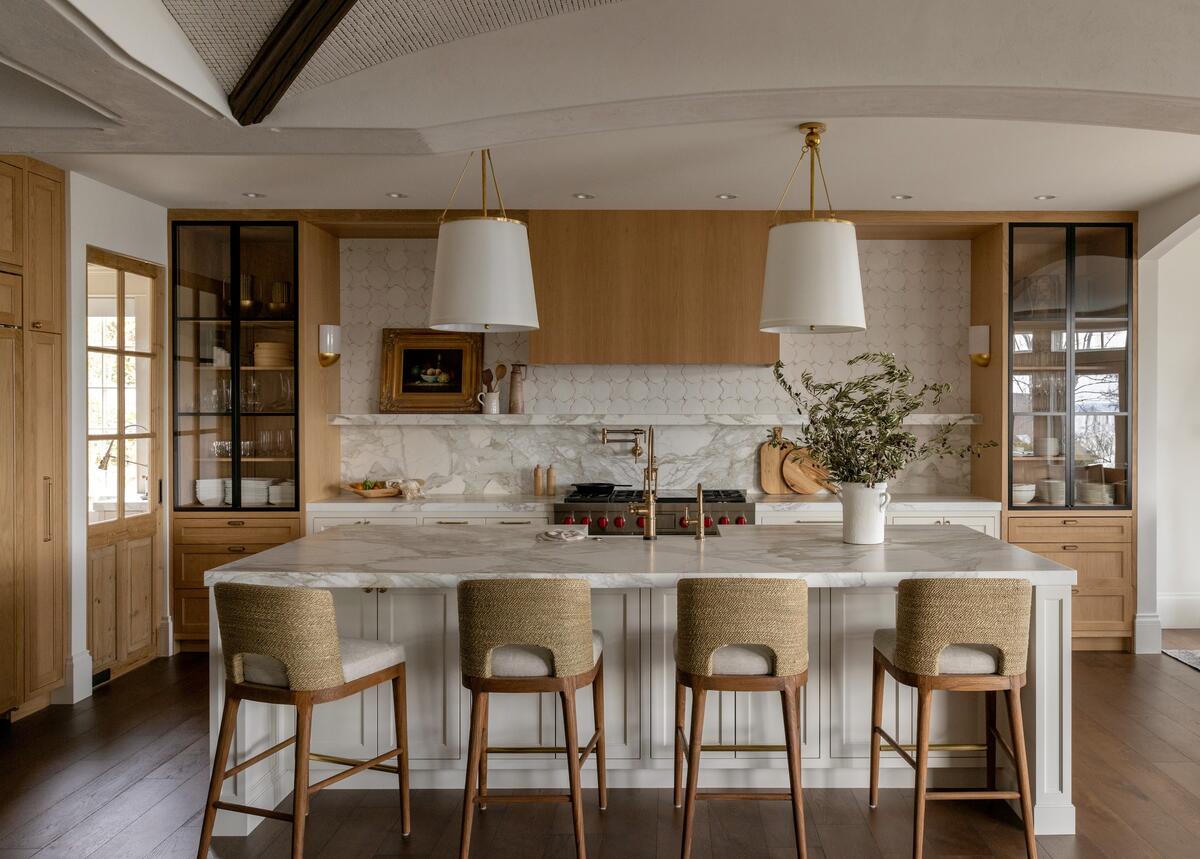
When you look back, what do you know now that you wish you had known when you first started the company?
I think the biggest one for me is to trust yourself. There’s a reason why people are looking to hire someone to do this job. It’s not about just making people happy; it’s about being their advocate and the authority for what they’re hiring you to do. There have been so many times in the past where I was like, “Oh, I love this tile or this paint color,” but the client’s like, “I’m not sure.” And in the moment, I would say, “Oh, OK, I’ll find you another option.” No. Now I push it. I will say, “No, this is the right choice.” If you feel strongly that it’s the right choice, stand by that and feel good about that, because that’s going to give people more confidence in you. I wish I knew that early on, [because] I was such a doormat.
Does it just take time to learn that?
I do think it’s experience. I remember I had this client in New York—I’ve worked with her multiple times throughout the years, and she’s a dream—and I wanted to do this wallpaper for her powder bathroom. It was super bold and crazy, but I thought it was perfect. She thought it was ridiculous. She’s like, “What are you doing to me?” I said, “Mary, you have to do this. I love this. You can’t go wrong.” And she made some kind of joke about, like, “OK, I trust you. You could just put a poster of Justin Bieber on the wall and whatever, it’ll look fine.” So we did the wallpaper—and fast forward, she had a big housewarming party and invited me. Every single person at that party was coming up to her and commenting on how awesome the wallpaper was. So the next time I was at her house, while she was out, I hung a poster of Justin Bieber on the wall and left her a little note. But I think that’s probably the first time that happened in my memory—me standing behind something—and the outcome of that gave me such confidence moving forward. Here’s an entire room of her co-workers and friends, and everyone was commenting how much they love this thing that I forced on her, essentially.
Those times when they didn’t listen to me taught me a lot too. I often didn’t even photograph the end result, because I didn’t like how it turned out and was kicking myself thinking, “I should have fought for that.” I do think it comes with experience—you just have to feel that feeling. You have to feel the wins and the losses to know how to move forward.
How do you approach photographing your work today?
Because I have quite a good variety of work photographed, I’m pretty particular about it. I want to show more range because I want to reach more clients. I want to reach people who want something special and different. There have been a lot of projects that we’ve done that are beautiful and exactly what the clients wanted, but if they don’t stand out in a different way from what we already show, then I won’t necessarily photograph it. I just photographed my own home. Is it the most spectacular project I’ve done? No, because my budget is different from my clients’. But early on, when you don’t have a lot of work to show, photograph everything. It’s such an investment.
How are you choosing a photographer? Are you working with a stylist? How are you navigating those choices?
I have officially moved into territory where I have my favorite photographers, one on the East Coast and one on the West Coast. I also just started working with a stylist, and I will never go back. It’s an expensive undertaking—when you see those numbers, you’re like, “You want how much money for photos, and how much money to come bring flowers and style?” But when I saw what a difference it makes to the photo shoot, I realized that if I get one project from these photos, it pays for itself. That’s how you have to justify it. It’s completely worth the cost, because just snapping some iPhone pics of your work is never going to do it justice. I also know my strengths and my weaknesses: When I’ve completed a big project, I’m too close to it to see how to style it for a photo shoot. I’m seeing the big picture. I need someone with a fresh set of eyes to come in and really make it pop in the photos. So it’s an investment, but it’s worth it.
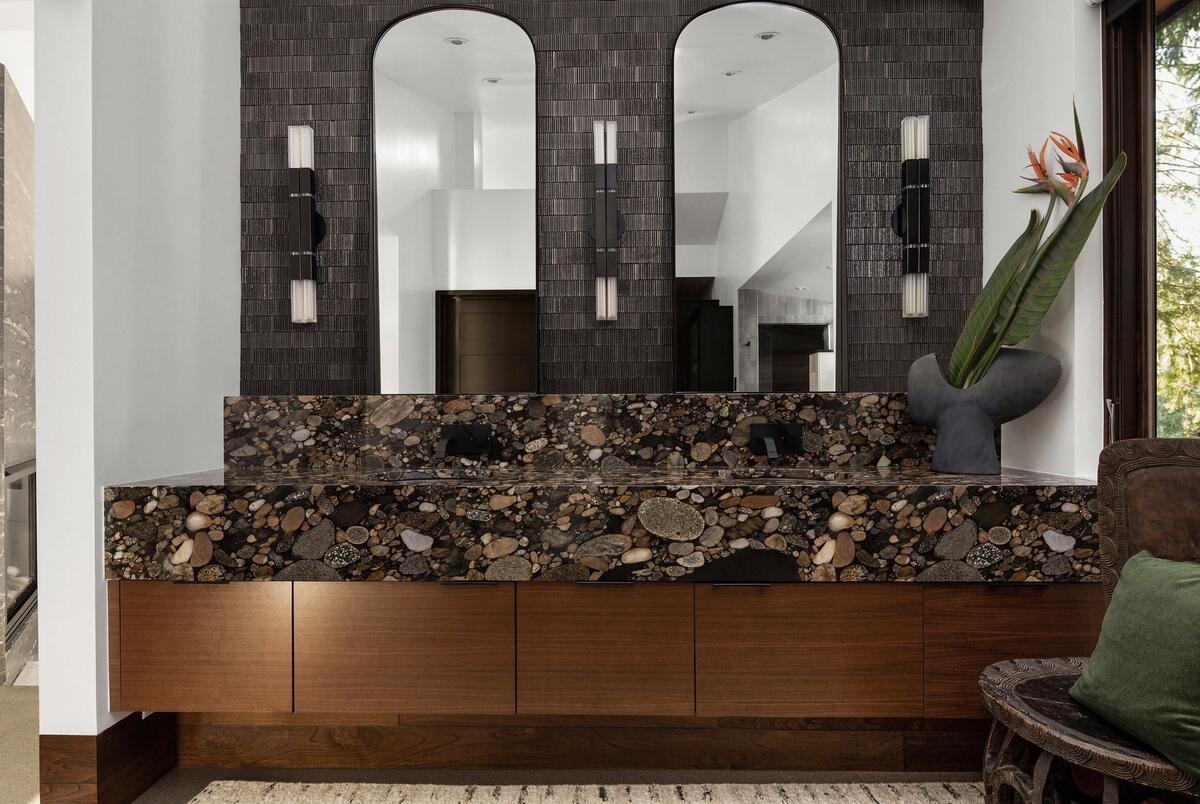
What does growth look like for you? Where do you see opportunity today in the industry?
For me, it’s just being open to taking on new and different things. I had previously said I will not do commercial, and now I’ve just signed in the last week two medi spas.
Your first two ever?
First two ever—and they are completely unrelated. One’s in Arizona and one’s here in Washington. Someone I recently hired has experience in commercial work, and I’m like, “Oh, I have her in place, so I guess if a commercial project comes on board that seems interesting, we have that team member ready to go.” Then a few months later, here we are. So growth for me is being open to those things.
But I have always been so happy where I’ve been. If I could sit down with me on that airplane [when I was] googling how to create an LLC, it would be the most incredible conversation, because I have grown so much since that day, but I still feel like the exact same person. I’m just doing this because—excuse my language—I fucking love it. Things have shifted around me, but growth is such a subjective thing. I don’t know if I really care to have this become more than it is right now. Would I be happy if it did? Absolutely. But it’s not my goal to have a bigger studio with more desks filled, with branding opportunities, with XYZ. I think a lot of designers have that on their calendar, what they’re looking forward to, and that’s awesome. And I, of course, wouldn’t hate it if that happened, but also I’m really happy, so I’m embracing where we’re at and loving our clients and loving the work that we’re doing. So why do I need to look toward the future and hope for something different?
What does success look like for you today?
Waking up and being excited to go get to work. That’s it for me. I mean, paychecks are great, but they come and go, and they vary. Some projects come with a huge design fee and they are a huge headache; and others, we’re probably at a little bit of a loss by the end of it—but oh, my God, we had so much fun. And it all kind of evens out, as long as the bills can get paid and I can take care of my team. All that matters to me is that we’re enjoying it and making our clients happy. That’s success to me, having people love to work with us and love what we’re presenting to them. It doesn’t get any better than a client presentation where they walk away and there’s no changes, and everyone’s really excited. We had one the other day where clients left and my design associate and I high-fived—that success is so good.
To learn more about Allison Lind, visit her website or find her on Instagram.















